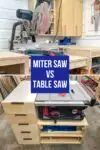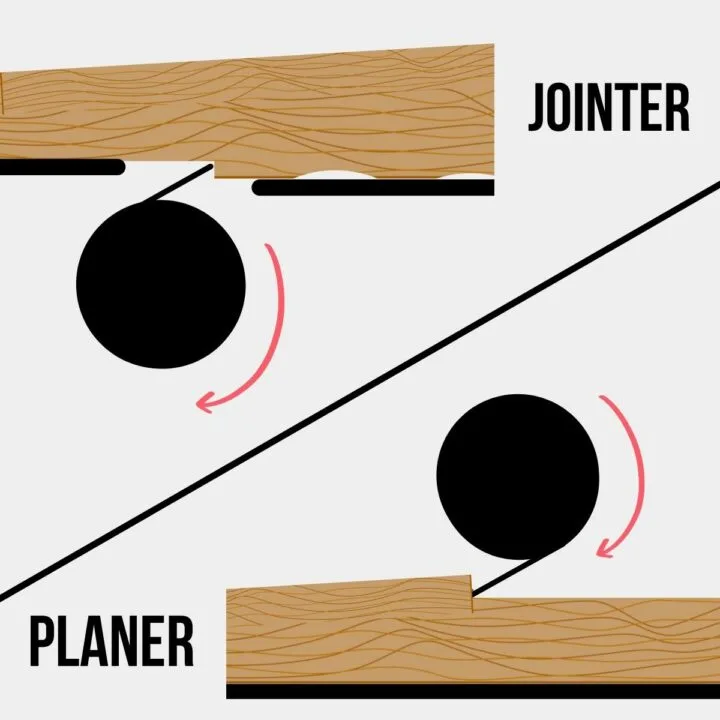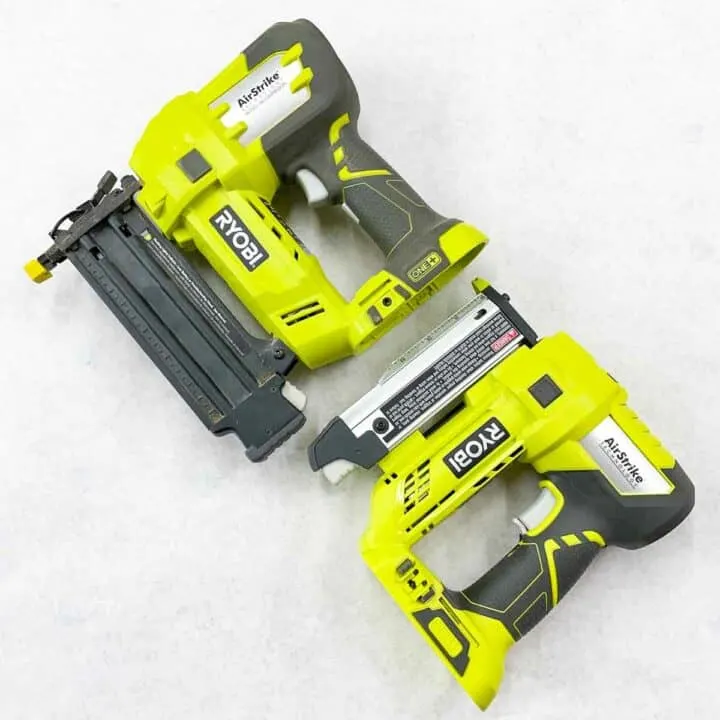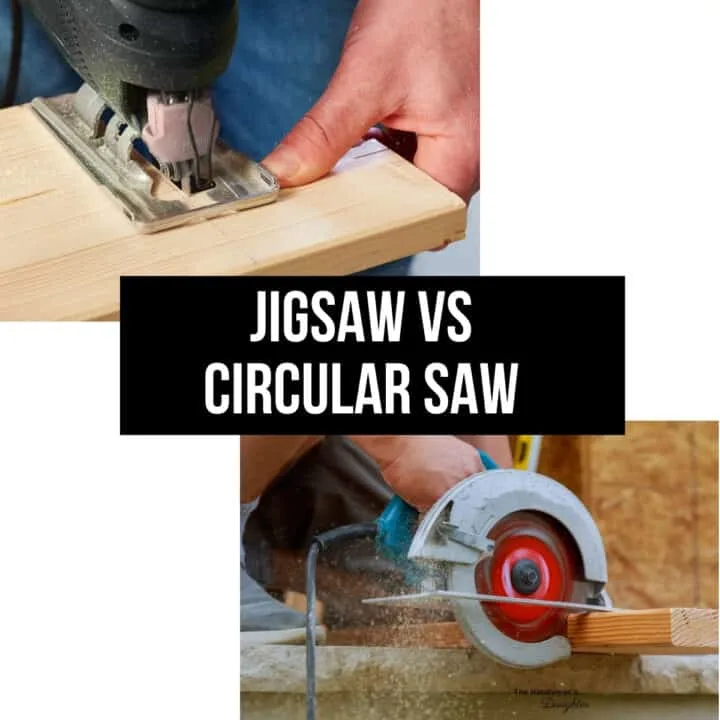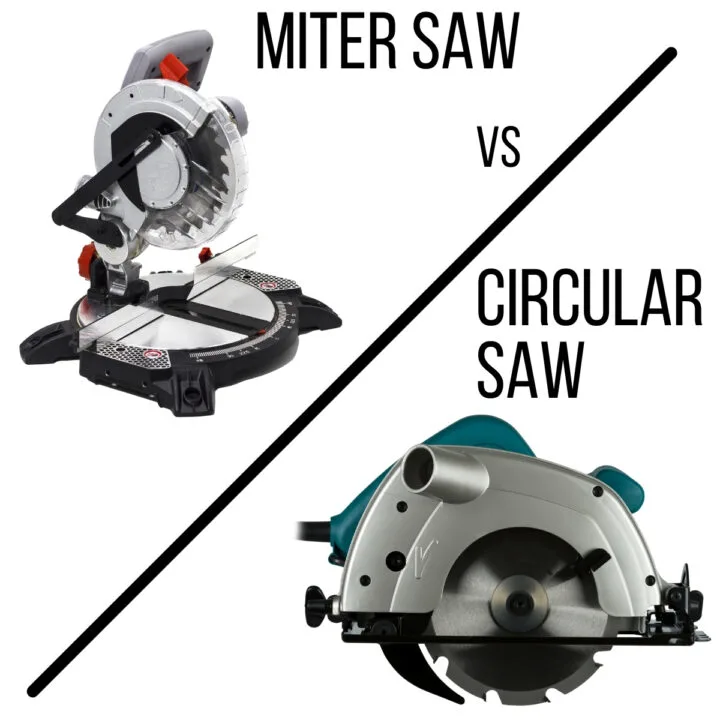Learn the difference between a miter saw vs table saw, and decide which tool is right for you and your next woodworking project!
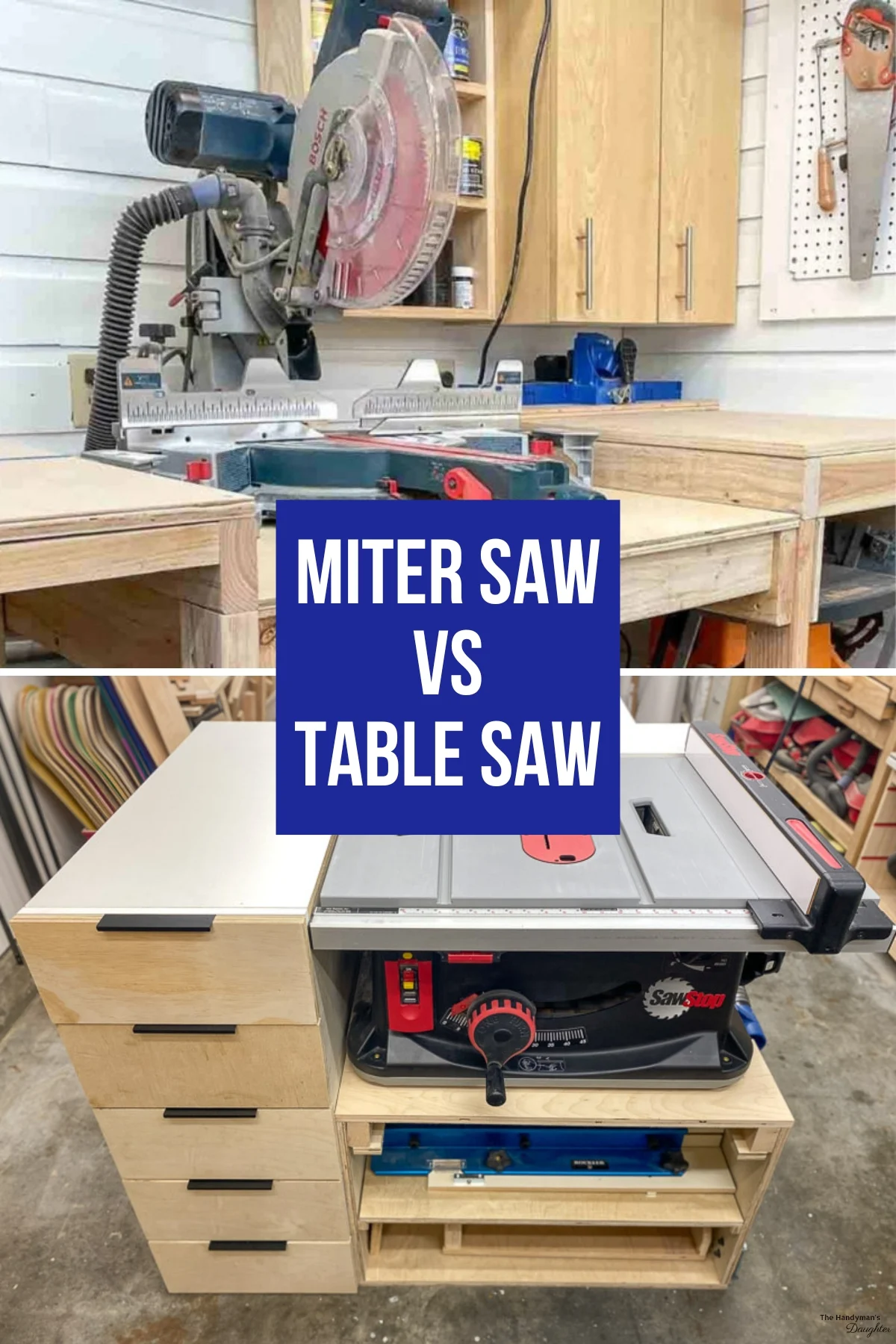
Table saws and miter saws are both important tools in any workshop. Each one excels at different tasks, although the table saw can make almost any cut the miter saw can.
Both saws have many uses, and there are variations of each tool. Let’s have a look at each, so you can decide which one is right for you!
This post contains affiliate links for your convenience. Purchases made through these links may earn me a small commission at no additional cost to you. Please visit my disclosures page for more information.
Main Differences Between a Miter Saw and a Table Saw
Before we go on to more specifics, let’s look at an overview of the main differences between the table saw and the miter saw.
Table saws are:
- More expensive
- Good for breaking down sheet goods like plywood
- More dangerous
- Both portable and stationary versions
- More versatile
Miter saws are:
- Good for chopping long, narrow boards
- Makes angled cuts
- More portable
- Generally, less expensive
Now that you have a quick overview, let’s break each of these tools down in more depth!
What is a Miter Saw?
The miter saw is also known as a chop saw. This name comes from the chopping action of the saw blade as it cuts through boards. The miter saw powers a spinning blade on a hinged arm. The blade is pulled down through the board.
The miter saw is a better choice for a beginner. They're much safer and easier to use for a wide variety of projects. You can find a more in-depth tutorial on how to use a miter saw here.
A miter saw can be portable, or you can build a miter saw table to mount it in a more permanent location. I made my own miter saw station that also houses a router table, planer stand and benchtop sander!
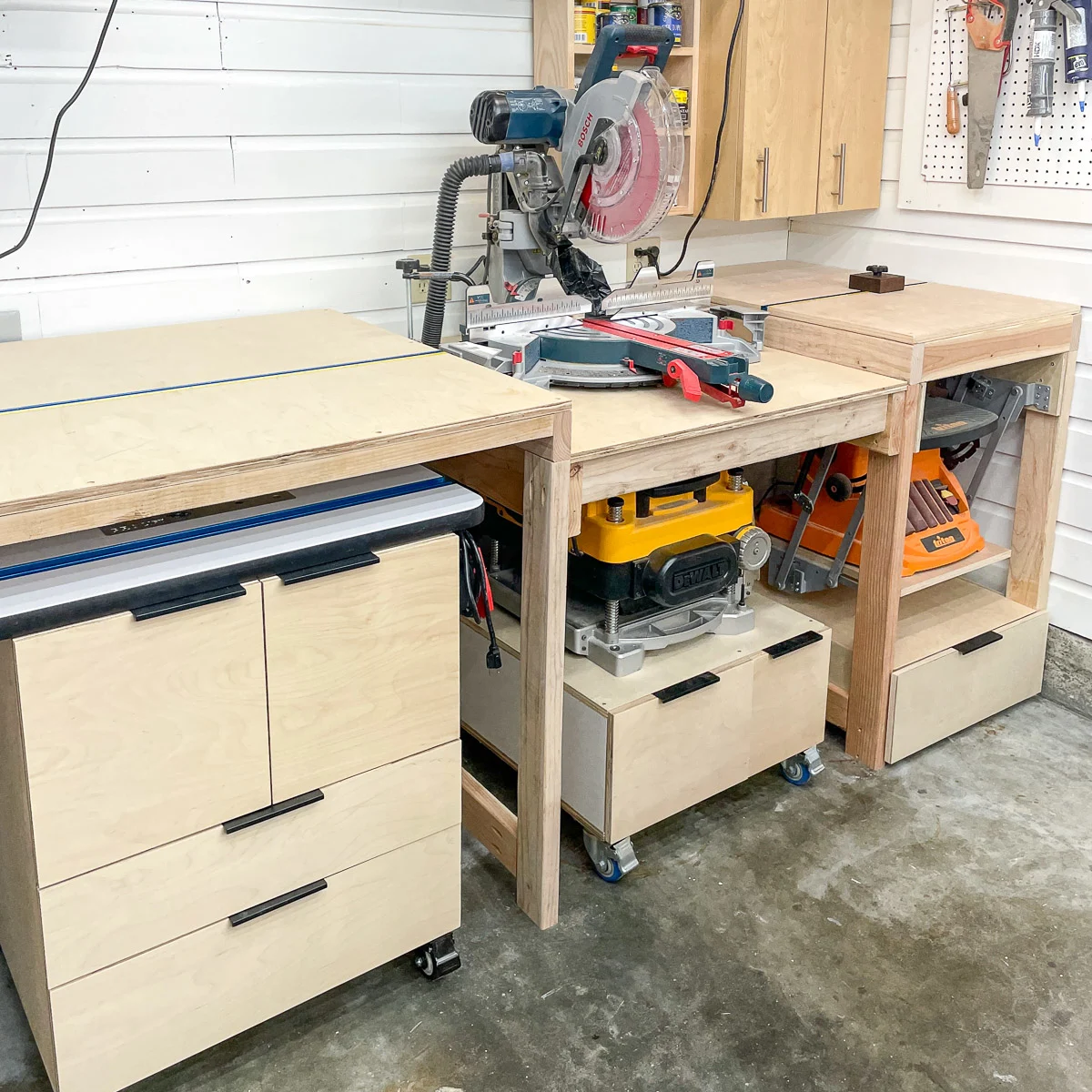
Let’s talk about the different types of miter saws.
Single-Bevel vs Double-Bevel Miter Saw
The first consideration you'll have to make is whether you want a single or double bevel miter saw.
A single beveled miter saw means that the saw can only tilt in a single direction. Miter saws move up and down, but they can also tilt side to side to make angled cuts. With a single beveled miter saw, you will only be able to cut a bevel in one direction, meaning you’ll need to flip the entire board if you want to cut in the other direction.
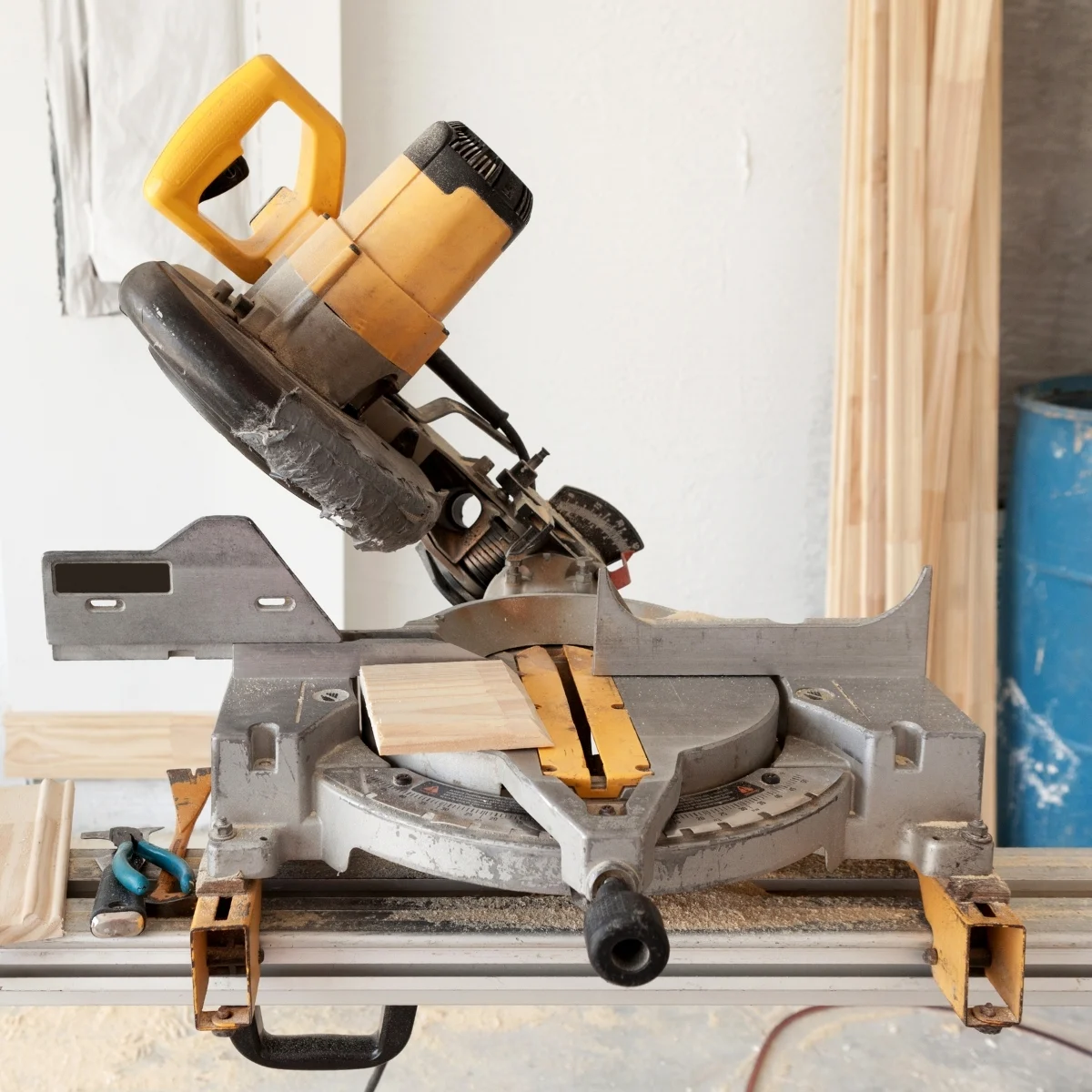
Double-beveled miter saws, on the other hand, can tilt in either direction, making a bevel cut on the right or the left side of the board. For those who are doing a lot of trim work, where there will be multiple angles and bevels, a double-beveled miter saw can be nice.
A compound miter saw is one that can make basic miter cuts but can also make compound miter cuts – cuts that are both beveled and mitered. These cuts are sometimes required for crown molding, or intricate framing, where multiple angles are required. Basic miter saws don't have this capability.
Sliding vs Non-sliding Miter Saws
Next, you need to decide whether you want a sliding or non-sliding miter saw. A sliding miter saw allows you to cut wider boards. Non-sliding miter saws only cut straight down instead of pulling forward.
There are two different mechanisms for sliding miter saws. The most common type moves back and forth on two metal bars behind the saw. The second type has an articulating arm that doesn’t take up as much room.
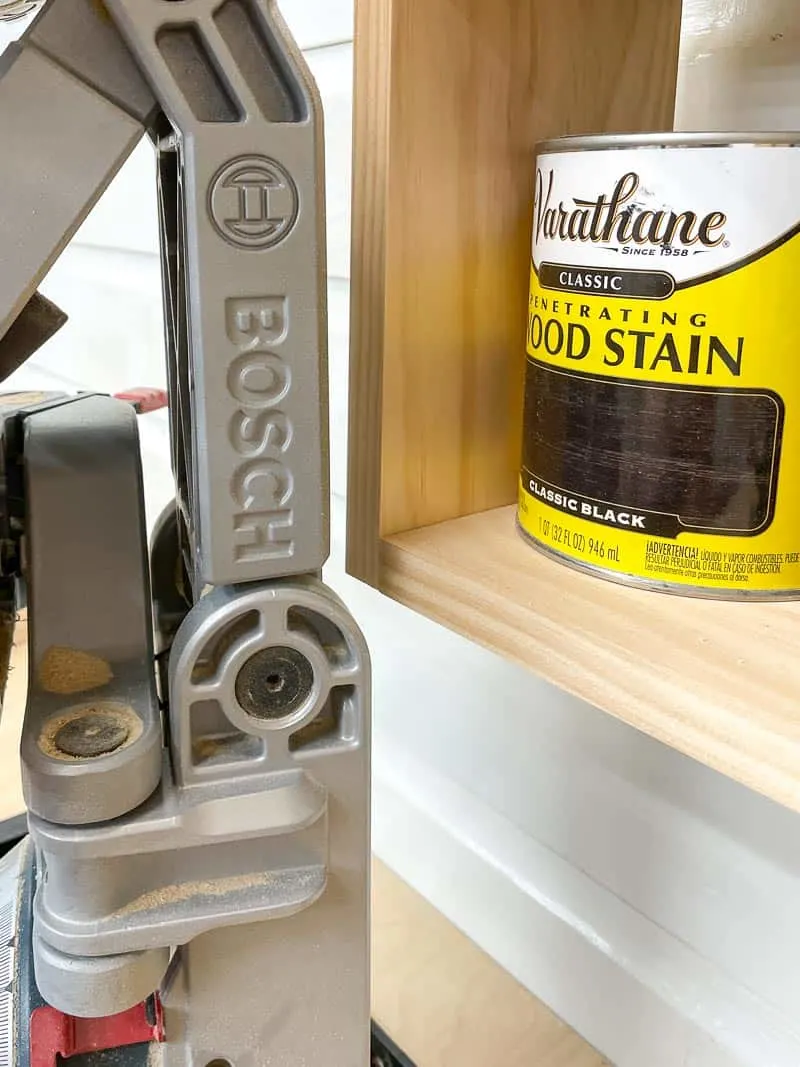
When Should You Use a Miter Saw?
The sky is the limit as far as projects when it comes to miter saws. Depending on the size of the miter saw, you can cut pretty wide boards. However, the main limitation is that it’s not designed to cut down large sheet goods. For those projects, you’ll need a circular saw, table saw or track saw.
Use a miter saw any time you need to make an angled cut. Also, the miter saw is a great tool for cutting multiple narrow boards to the same length with the help of a stop block.
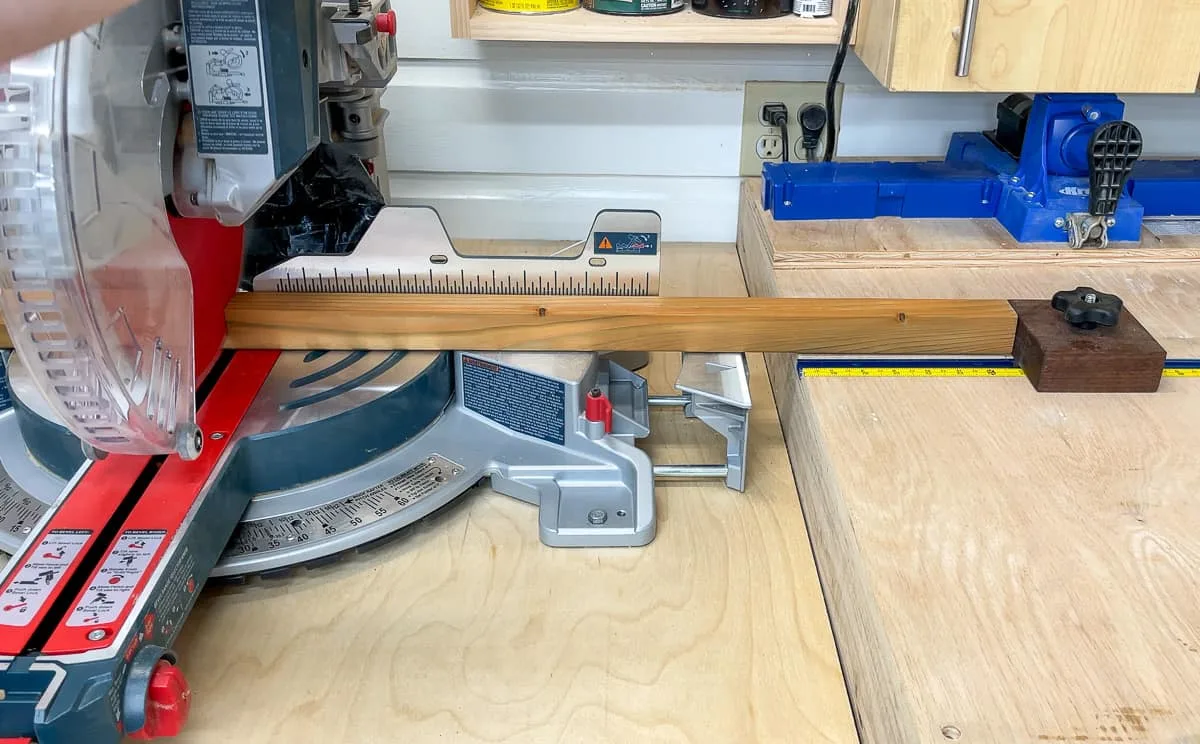
Also, the miter saw will not make curved or s-shaped cuts – for that, you’ll need a jig saw or band saw.
What is a Table Saw?
A table saw is a workshop power tool that has a circular blade mounted inside a flat table top. The wood is pushed through the blade, preferably with a push stick or block like this one.
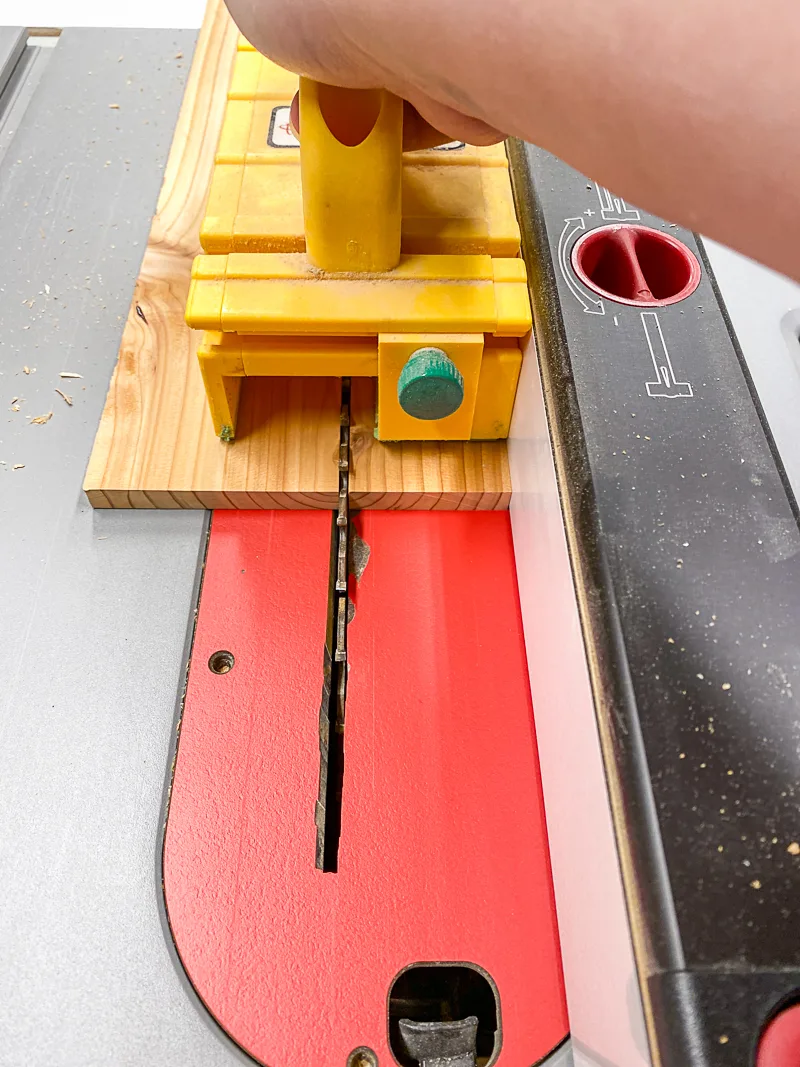
You can also make cross cuts by using the miter gauge or a cross cut sled. The miter gauge can also be used for making angled cuts.
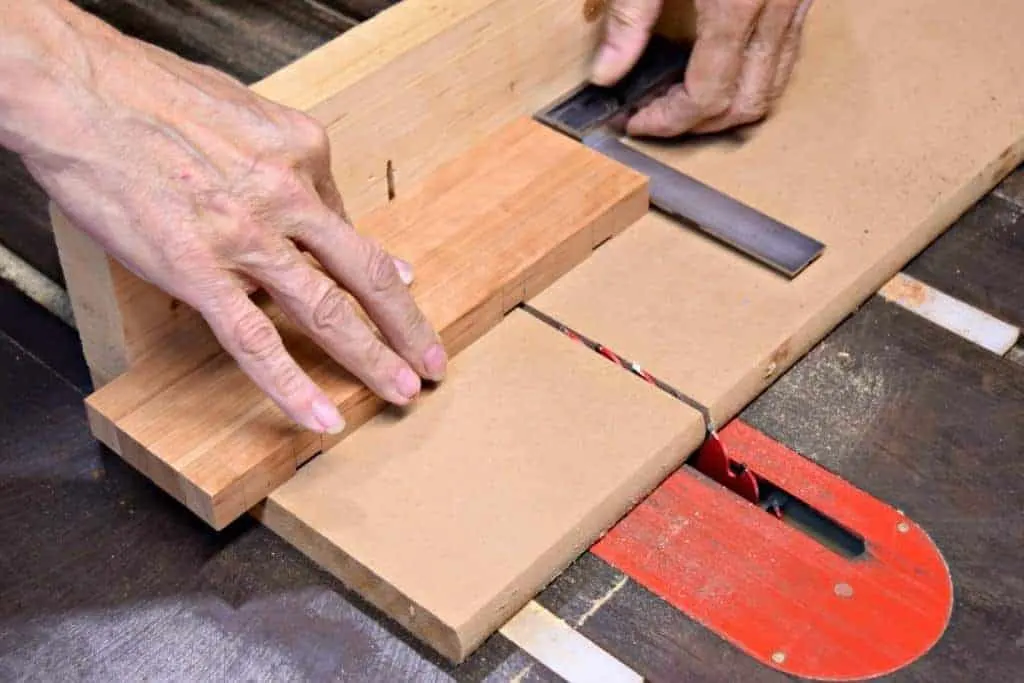
Table saws come in two main types: portable jobsite saws, and stationary cabinet saws. The portable table saw can be carried to job sites (usually mounted on a stand). The cabinet table saw stays in the workshop, and is typically more powerful and more precise.
However, with a little ingenuity, you can make a quality portable table saw work like a cabinet table saw! Check out how I made a table saw stand for my portable table saw.
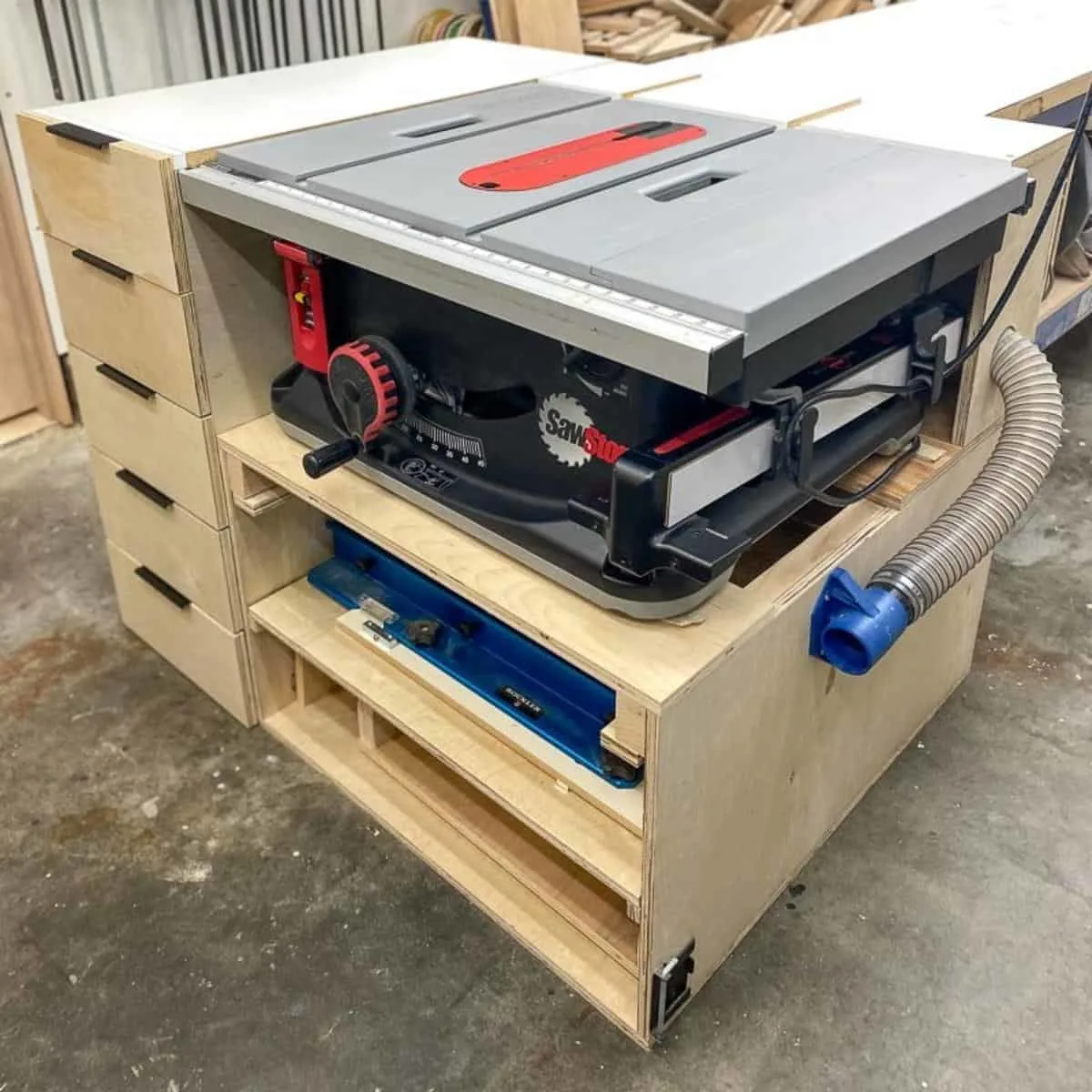
When Should You Use a Table Saw?
A table saw can tackle almost any cutting task. But here are a few instances where it truly excels:
- Break down large sheets. A table saw is typically used to cut down large sheet goods like MDF, OSB or plywood.
- To trim a board to a clean edge. Many times, you can’t trust the factory edge on a board to be straight. The table saw allows you to get a clean and true cut.
- Cross cuts and rip cuts. Use the rip fence to make long rip cuts along the length of a board and the crosscut fence to safely make cuts across the width of a board.
- Dados, grooves and rabbets. These cuts only go partway through the board, typically to house a drawer bottom or cabinet back panel.
- Specialty cuts. There are some cuts that just can't be made on other power tools safely. In some instances, you'll need to build or buy a special jig created for a specific task. For example, I made a spline jig for cutting grooves in the corners of boxes for my table saw.
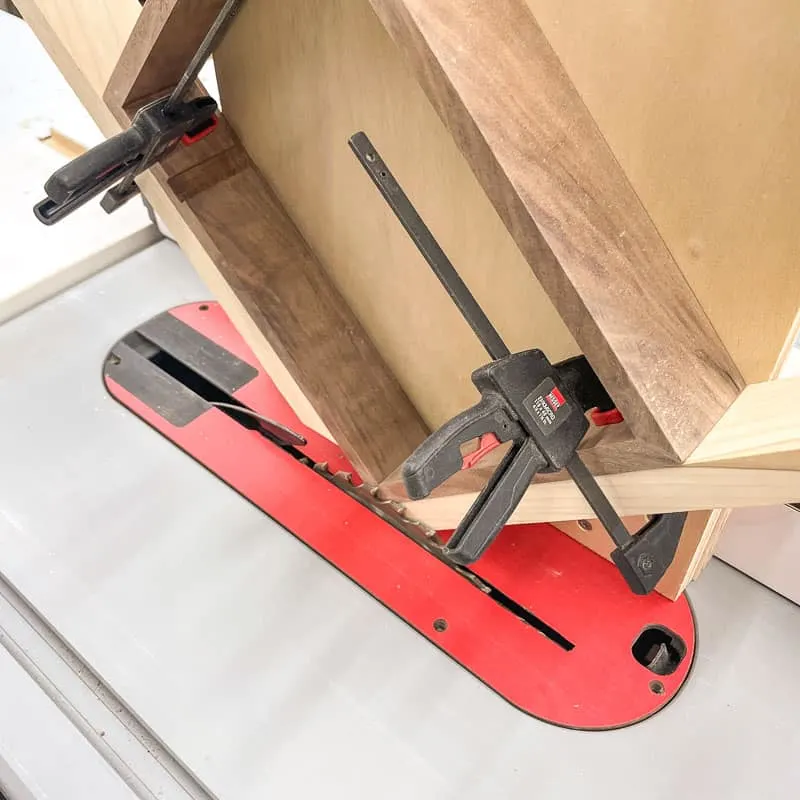
Which tool should you buy first?
I always recommend that beginners buy a miter saw first. It's less expensive, and less intimidating to use than a table saw. For sheet goods, you can get by with a circular saw or track saw for quite a while before you need to splurge on a table saw.
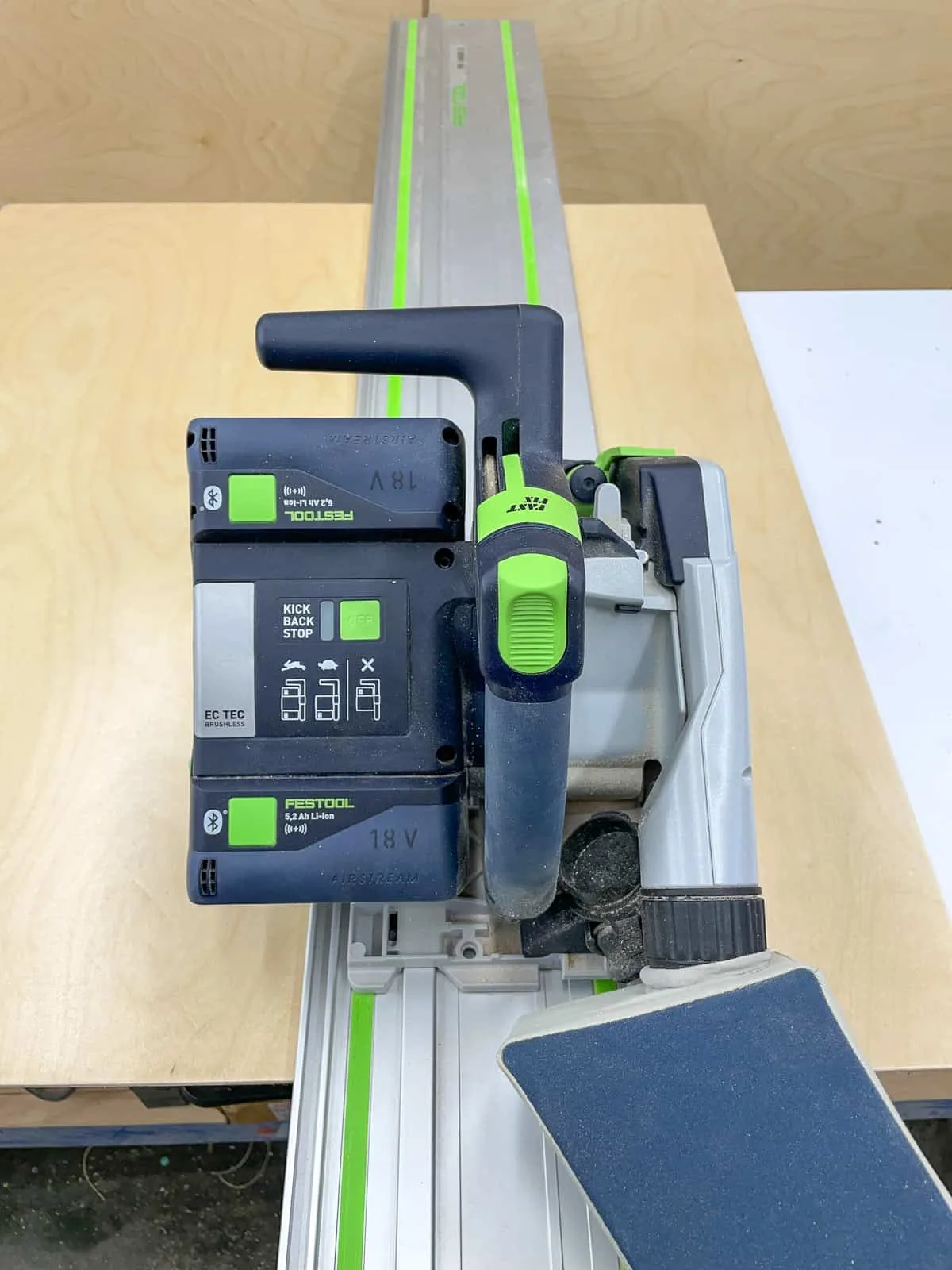
Want to learn the difference between other types of tools? Check these out!

